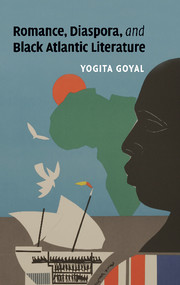Book contents
- Frontmatter
- Contents
- Acknowledgements
- Introduction: the romance of diaspora
- 1 From domestic allegory to imperial romance: Pauline Hopkins and racial mixture
- 2 From double consciousness to diaspora: W. E. B. Du Bois and black internationalism
- 3 From nativism to nationalism: Joseph Casely Hayford, Chinua Achebe, and colonial modernity
- 4 From romance to realism: Richard Wright and nation time
- 5 From revolution to arrested decolonization: Ama Ata Aidoo and the long view of history
- 6 From return to redemption: Caryl Phillips and postcolonial hybridity
- Notes
- Index
Introduction: the romance of diaspora
Published online by Cambridge University Press: 04 August 2010
- Frontmatter
- Contents
- Acknowledgements
- Introduction: the romance of diaspora
- 1 From domestic allegory to imperial romance: Pauline Hopkins and racial mixture
- 2 From double consciousness to diaspora: W. E. B. Du Bois and black internationalism
- 3 From nativism to nationalism: Joseph Casely Hayford, Chinua Achebe, and colonial modernity
- 4 From romance to realism: Richard Wright and nation time
- 5 From revolution to arrested decolonization: Ama Ata Aidoo and the long view of history
- 6 From return to redemption: Caryl Phillips and postcolonial hybridity
- Notes
- Index
Summary
Romance offered writers not less but more; not a narrow a-historical canvas but a wide historical one; not escape but entanglement.
Toni Morrison, Playing in the DarkIn August 1920, the Universal Negro Improvement Association held its first convention in New York City. Led by Marcus Garvey (1887–1940), its members held meetings, sessions, and ceremonies for a whole month, as UNIA officers dressed in full regalia, with the Black Star Line band and choir, the African Legion, the UNIA Motor Corps, and the Black Cross Nurses, along with contingents of delegates from the United States, Canada, the Caribbean, Central America, and West Africa, paraded down the streets of Harlem. A mass meeting at Madison Square Garden, with attendance estimated at 25,000, capped it all off, as Garvey declared: “The other races have countries of their own and it is time for the 400,000,000 Negroes to claim Africa for themselves, and we mean to retake every square inch of the 12,000,000 square miles of African territory belonging to us by right divine.” Garvey, the most spectacular leader of the back-to-Africa movement in the first few decades of the twentieth century, offered a potent combination of religion, politics, militarism, and fantasy, as his marches in Harlem showcased a peculiar blend of spectacle and theatricality, discipline and determination.
- Type
- Chapter
- Information
- Romance, Diaspora, and Black Atlantic Literature , pp. 1 - 24Publisher: Cambridge University PressPrint publication year: 2010



